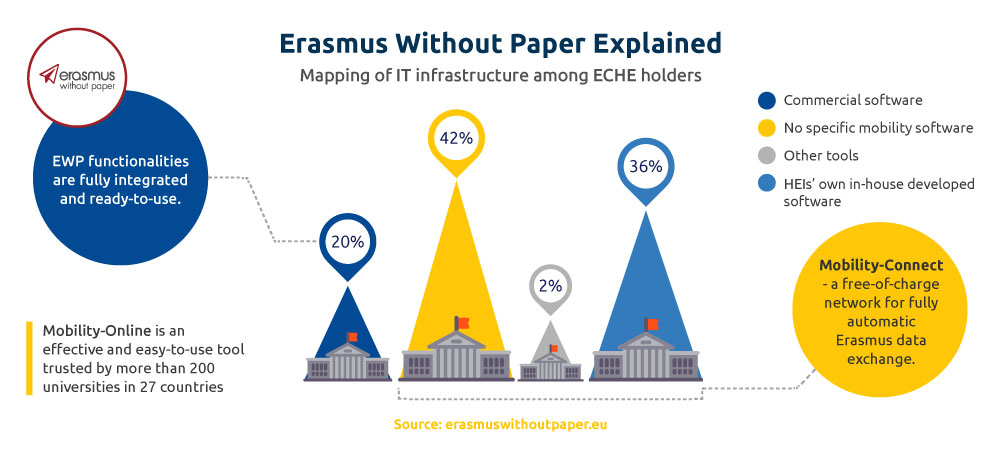Latest Erasmus Without Paper assessment shows EWP works but some connections have problems
The recently published Erasmus Without Paper assessment report made clear that EWP works. However, some software providers do not yet fully comply with the EWP standards. As a result, data exchanges are not always successful, especially regarding inter-institutional agreements.
.
 What the report assesses
What the report assesses
The Erasmus Without Paper assessment report takes stock of where we are today in terms of EWP data exchanges. It aims to improve the collective understanding about how well the EWP works. In doing so, it identifies problem areas as accurately as possible and enables decisive action.
State of play
The report acknowledges that digital transition is hard for higher education institutions, and that the numerous efforts made by them and other involved public and private organisations, did not yield the envisaged results.
Key enhancement steps taken for EWP in the context of the interoperability reinforcement plan have started to show results. These include:
- EWP Governance
- an effective service desk
- intensified technical testing
The interoperability reinforcement plan aims to solve all critical interoperability issues by the end of 2022.
Main findings from the report
- an overwhelming majority of the target population (higher education institutions holding an ECHE-charter implementing student mobility) is already connected to EWP and ready to exchange data for crucial administrative steps.
- inter-institutional agreements (IIAs) and learning agreements (LAs) concluded over the network increased considerably over the last 3 months. For example, concluded IIAs went from 2,000 to over 32,000 since the start of the interoperability reinforcement plan. Institutions should now be able to finalise IIAs and LAs in a digital format with a majority of their partners.
- the vast majority of institutions should be able to exchange with several nodes in the EWP Network. Only a relatively small number of higher education institutions (10-15%) cannot smoothly exchange data electronically. However, this has a devastating effect on how efficiently the entire programme can operate.
- IIA data exchanges have been the source of most identified problems.
- LA data exchanges are affected by comparatively minor and much less frequent issues.
- 11 out of 16 third-party providers pass the IIA readiness assessment. There are 320 higher education institutions that are connected to EWP via providers but who cannot ensure adequate exchanges of IIA data (at the time of the publication of this report). These need to take extra action.
Next steps
Based on existing targets, from 2023 onwards higher education institutions should be able to conclude all new IIAs and LAs through EWP.
Any institution still experiencing technical problems in exchanging data with one or more of their partners should report this to the expanded ESCI helpdesk. Active inter-institutional agreements already agreed via paper or email exchange will remain valid after 31 December 2022.
The Relationship Managers and the EWP+ consortium will support the providers identified to comply with the specifications as soon as possible.
The European Commission will rely on the governance structure to generate broad stakeholder feedback. Combined with a transparent view of what is going on in the EWP Network, the Commission can then make informed decisions about setting any potential future targets for digitalising processes, such as exchanging nominations and transcripts of records.












